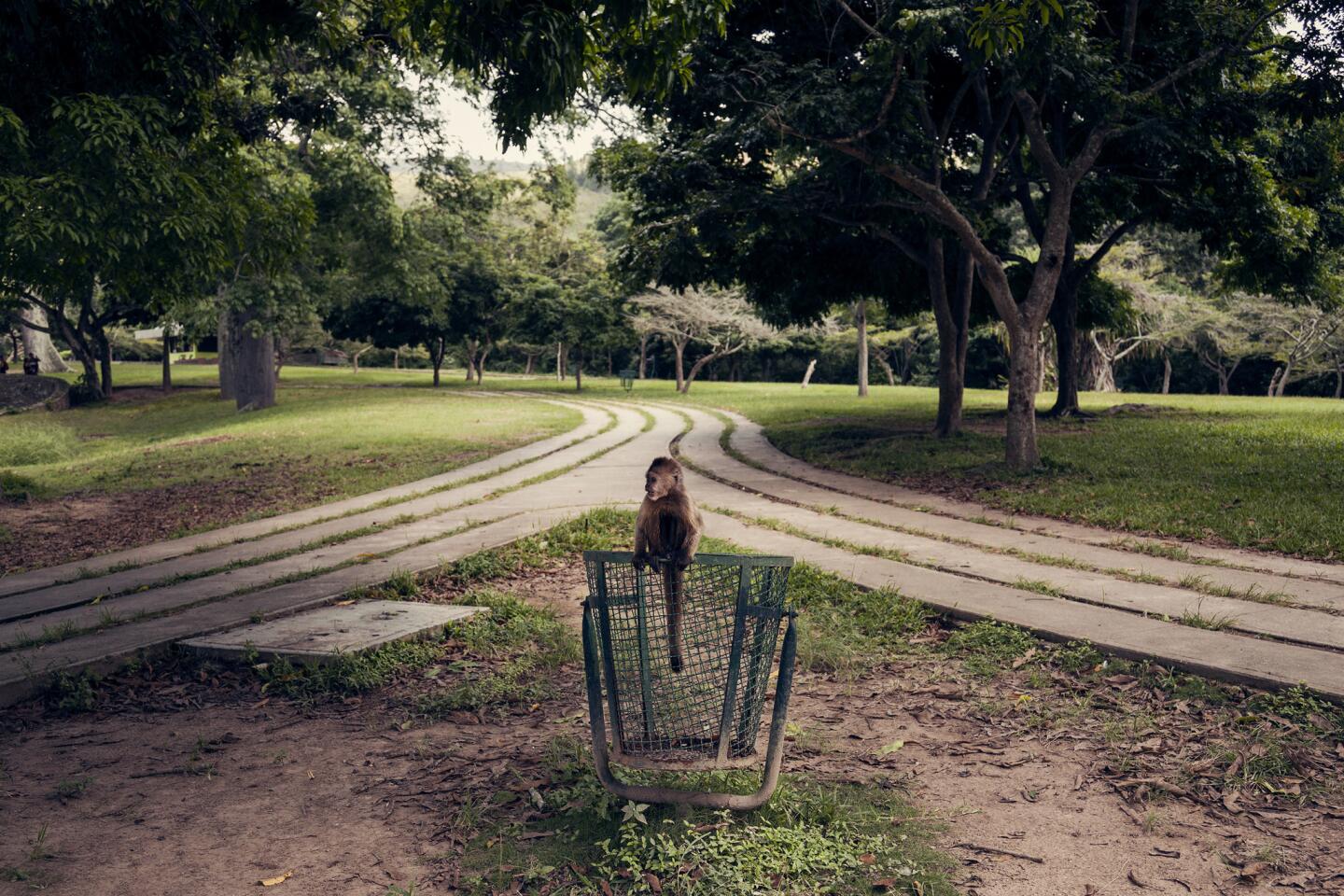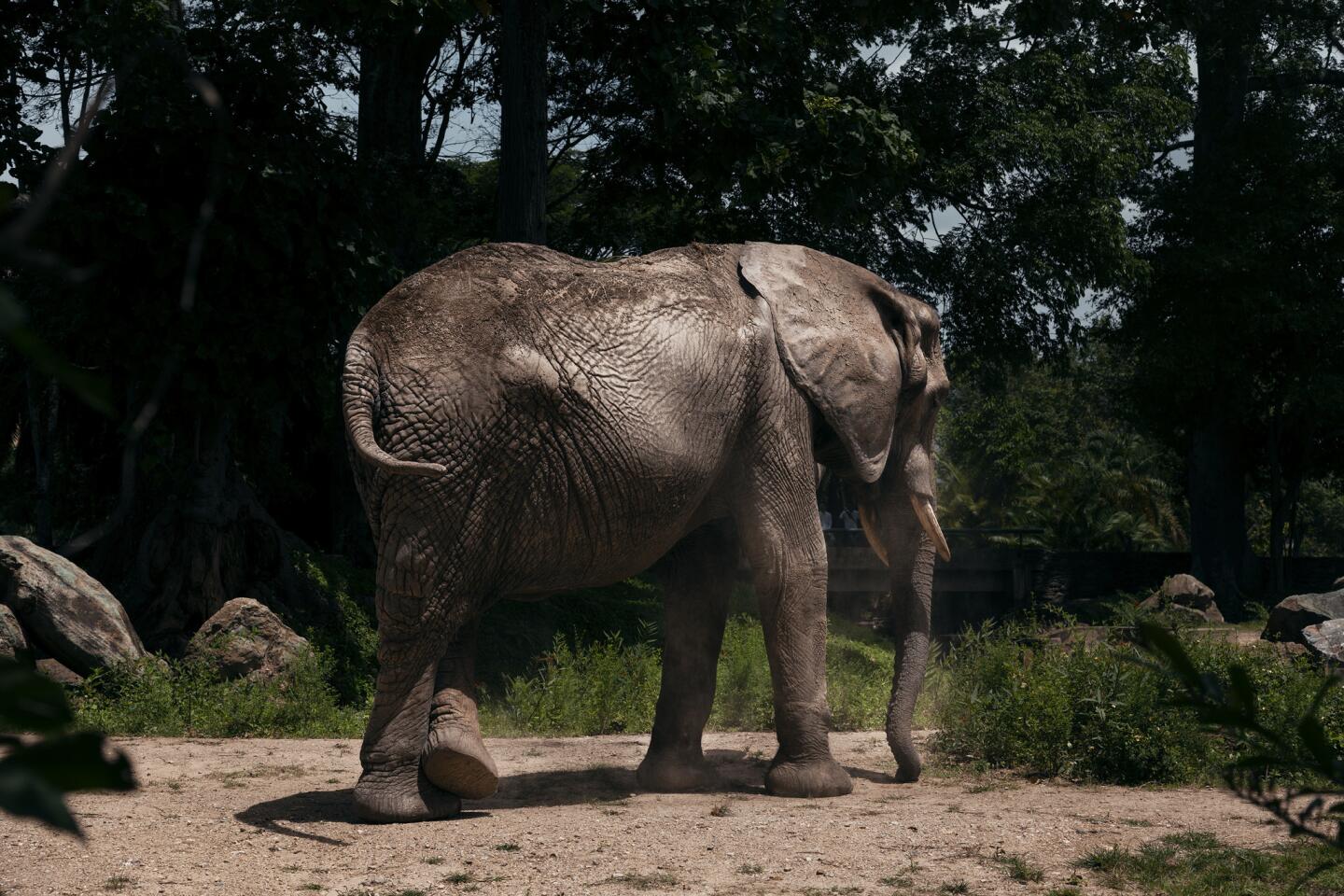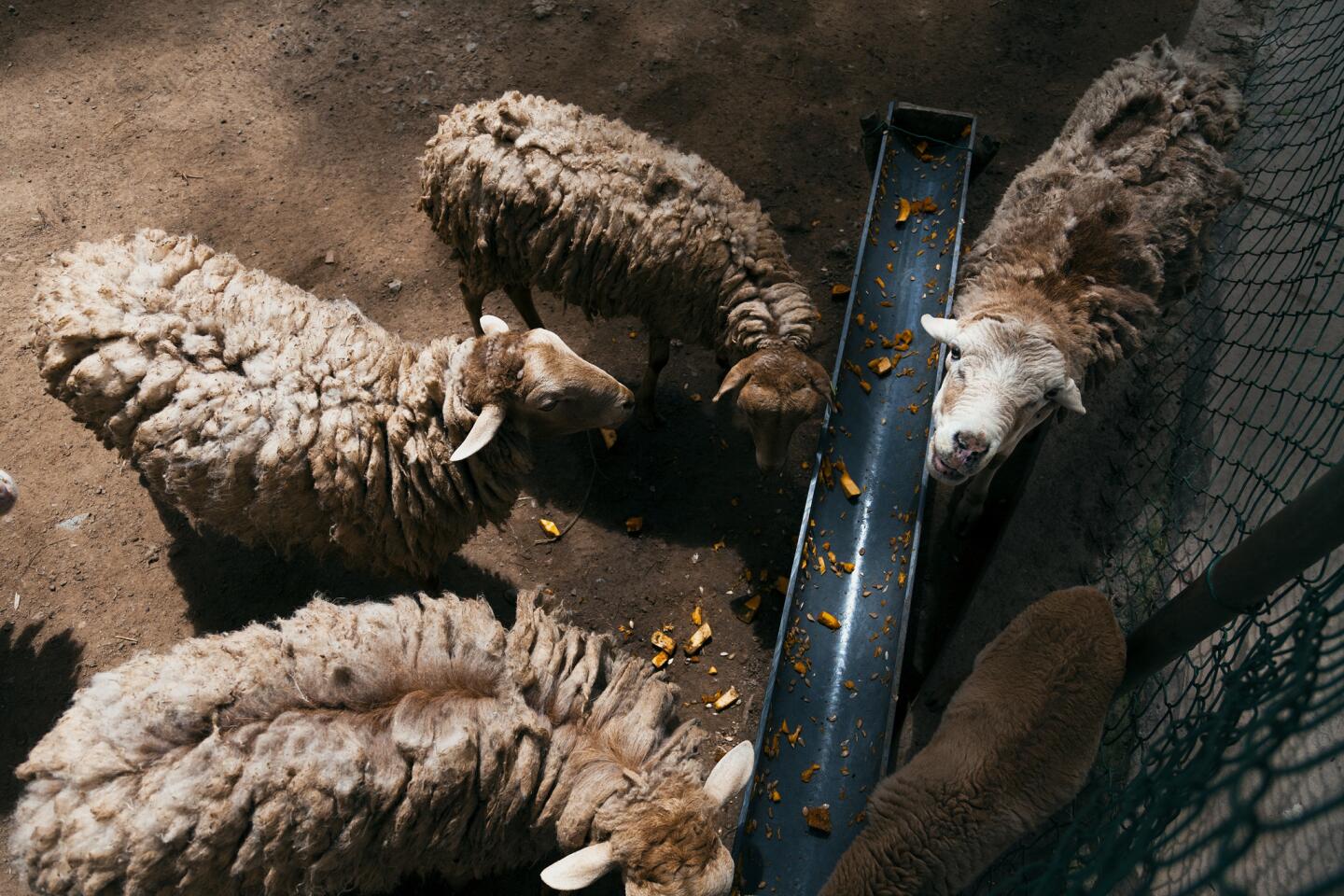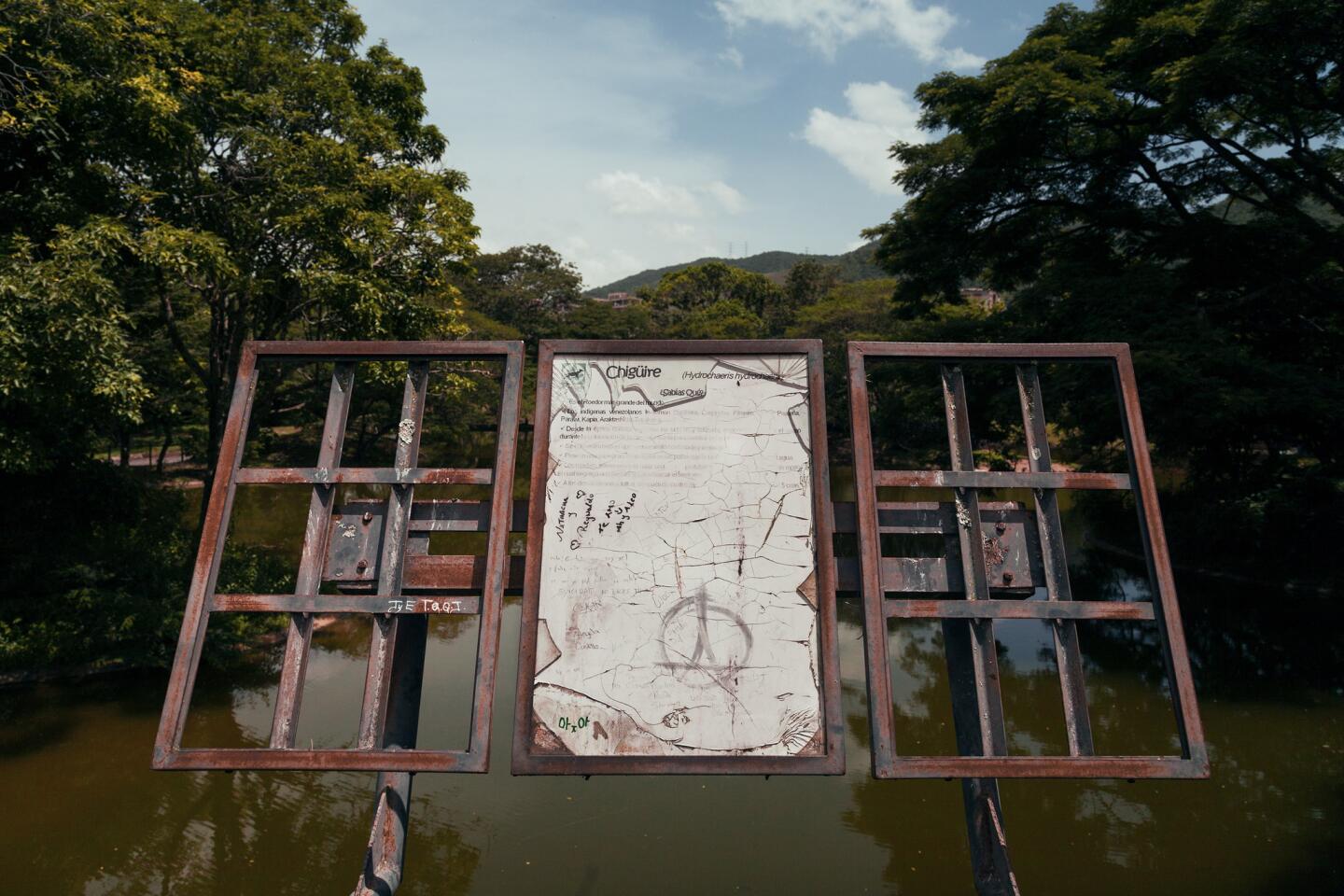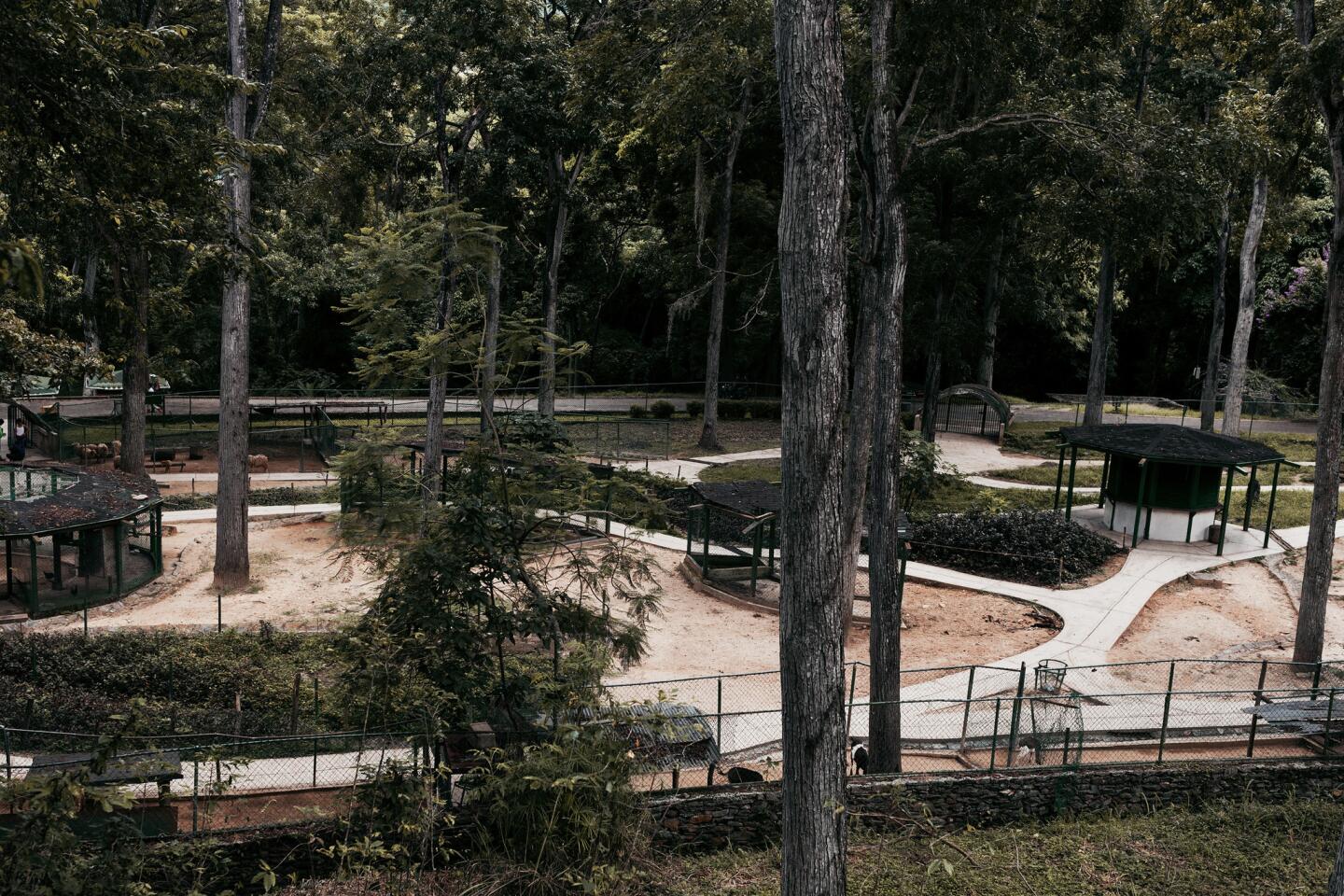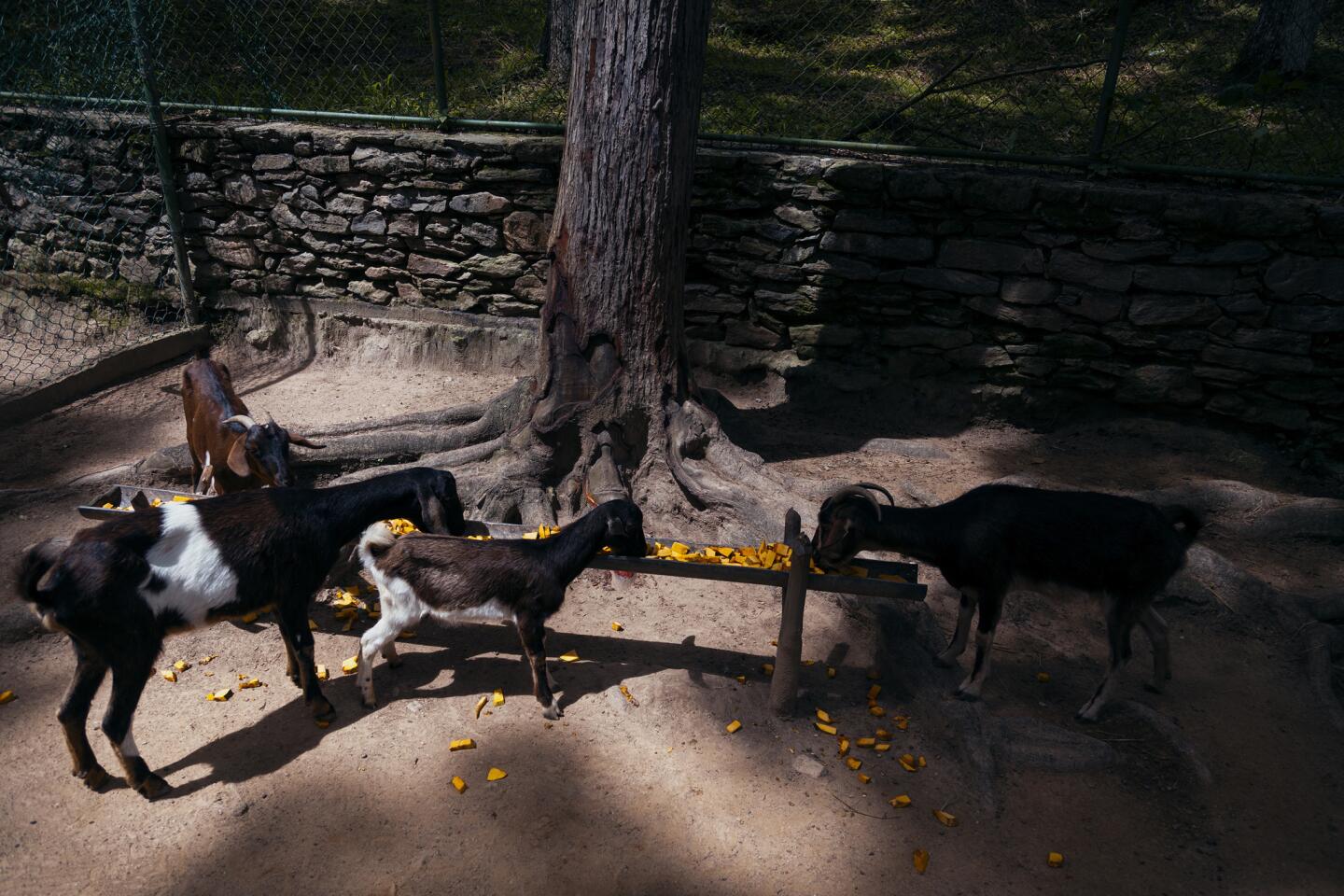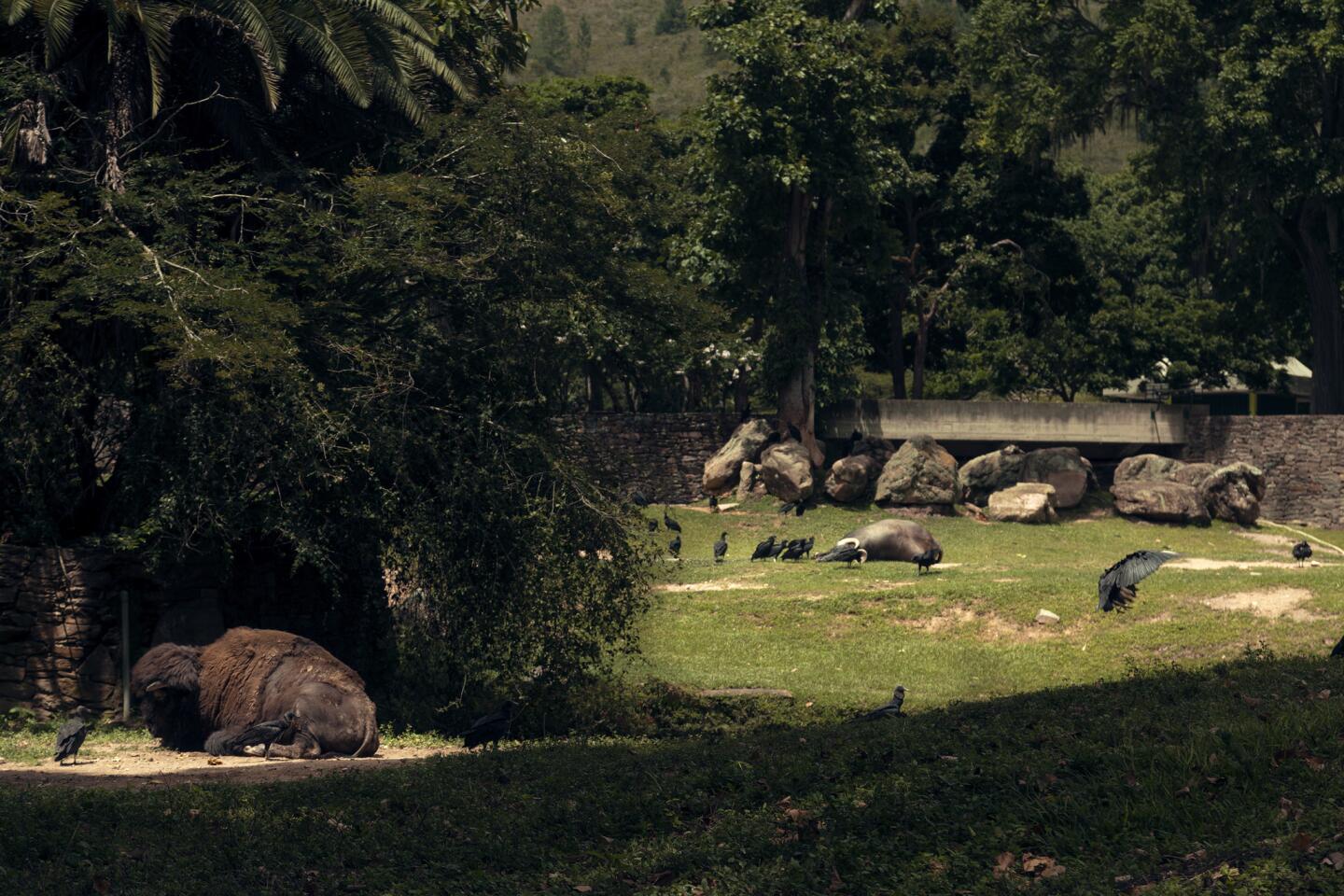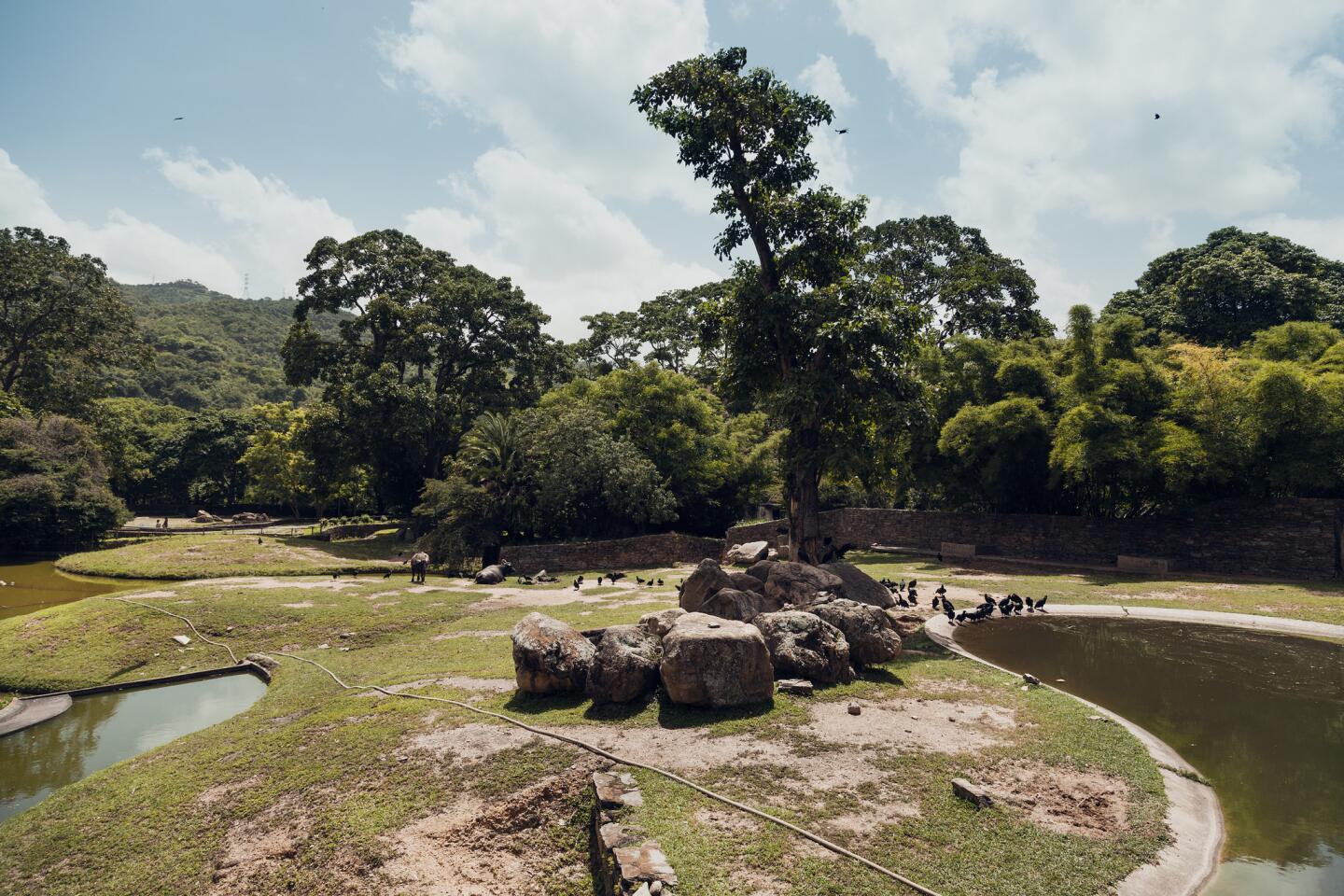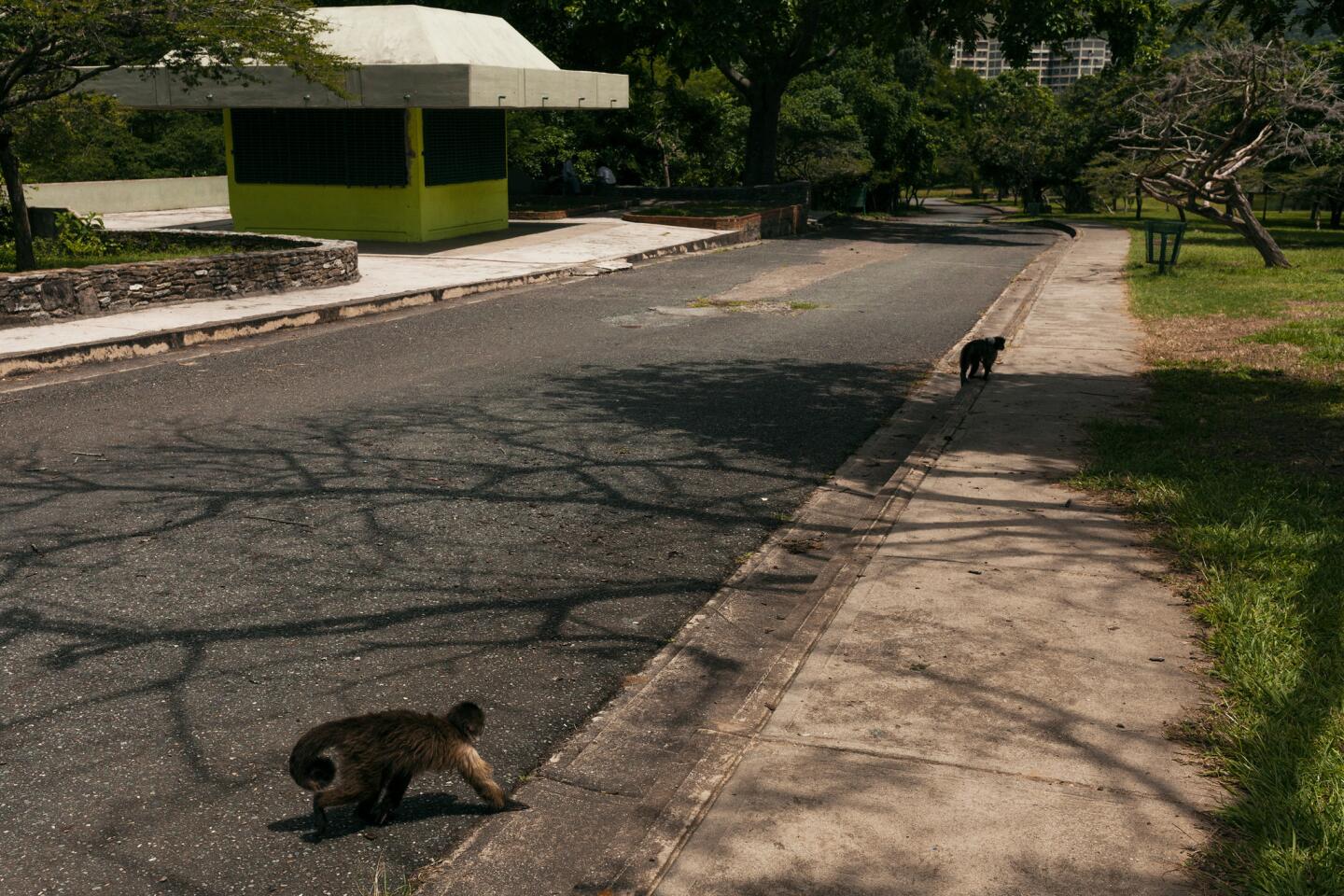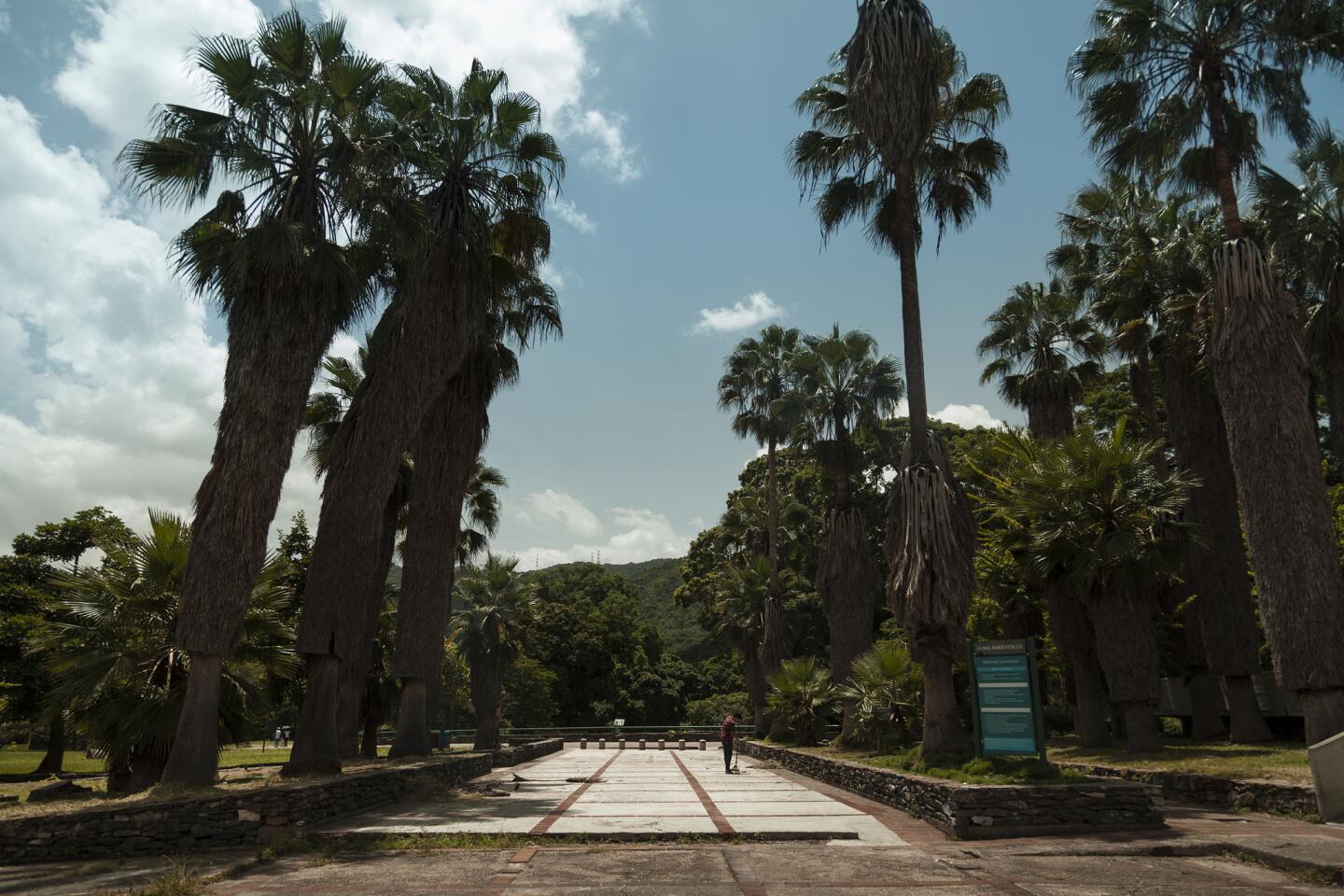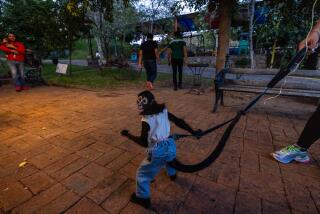Another victim of Venezuela’s unrest: Caracas’ once-renowned zoo
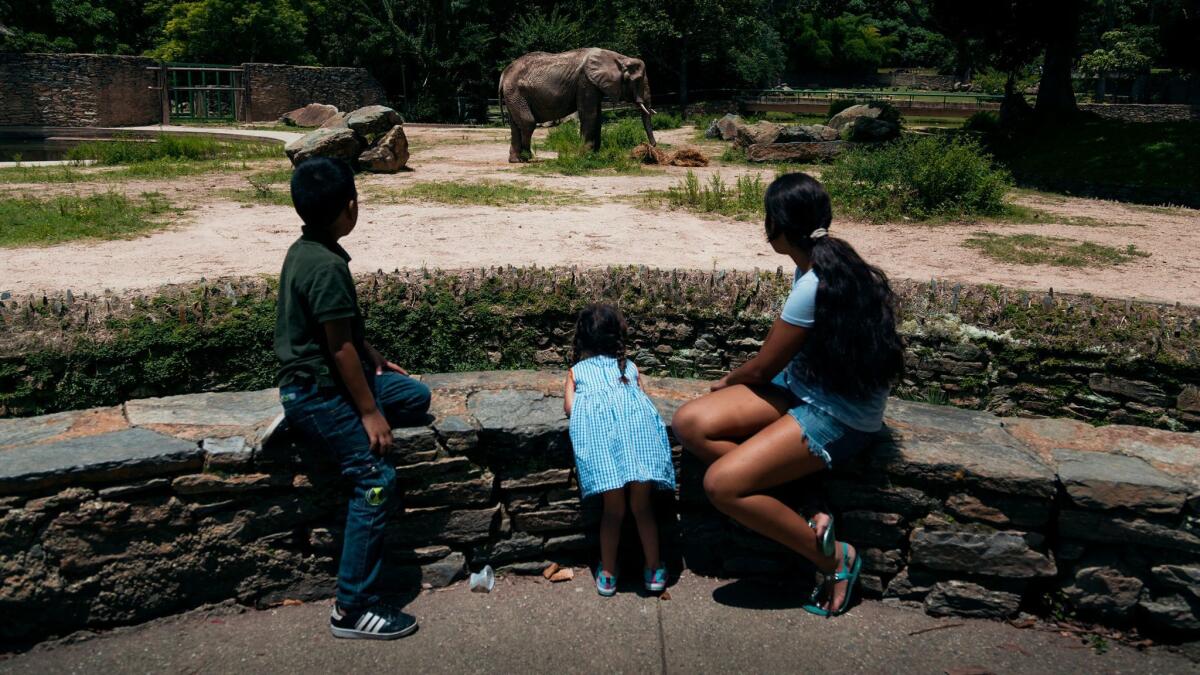
Reporting from CARACAS, Venezuela — Nothing illustrates the miserable state of the Caricuao zoo more than the dozen vultures circling above the pen of Ruperta, a 46-year-old African elephant who was once the animal park’s star attraction.
Ruperta looks weak and emaciated — even bony along the spine and at her hips. In some parts of her exhibit, she stands knee-deep in weeds. She could be on her last legs, longtime zoo visitors fear, wondering if that’s a possibility sensed by the circling zamuros, as the local birds of carrion are called.
“She’s been here ever since the zoo opened,” said Maribel Garcia, a member of Caricuao Ecological Network, a zoo support group. “It’s not right that she is dying of starvation.”
Ruperta and other Caricuao animals have become living symbols of Venezuela’s collapsed economy and political chaos, evidence that people aren’t the only ones suffering from shortages of food and medicine, poor security and deteriorating public services. The once-prosperous, oil-rich nation now barely functions, a victim of plunging crude prices and, critics say, a corrupt and incompetent government.
The sprawling Caricuao zoo, which marks its 40th anniversary this month, had once been a showcase for tropical wildlife and one of Caracas’ tourist magnets, attracting thousands of visitors on weekends.
But the scenes once common at the zoo were conspicuous by their absence on a recent Sunday. No groups of excited children, no bright balloons or flags for sale, no adults taking photographs. And no educational exhibits and guides.
Monkeys ran wild, all holding out their paws and begging for food, a sign that food scarcities beset the zoo population as much as they do customers who browse the often-empty shelves of Caracas’ supermarkets.
Previously, dozens of families picnicked in open spaces. Now poor security has made that imprudent. “The zoo has become no man’s land,” said one visitor.
Indeed, the animal reserve is the picture of neglect, poorly attended and showing the effects of budget cuts and staff layoffs. Animal exhibits were filthy. Several decorative lakes in the areas between exhibits were covered in green slime.
“In my youth this was my favorite place in Caracas. There were exotic animals like ostriches, rhinoceros, lions, bison,” said Carlos Avila, who lives nearby and is a regular visitor despite deteriorating conditions. “Now people don’t come. It’s turned into a ghost zoo.”
Worst of all, the animal population has been decimated by malnutrition, poor veterinary care and theft, presumably by those looking for something to sell, or something to eat. Last year, the Public Ministry reported that in the early hours of July 24, people broke into the enclosure of a black stallion, led the horse to a secluded part of the park and butchered it for meat.
Officials at the Caracas parks department did not respond to a request for comment on zoo conditions. In June, zoo director Erick Lenarduzzi was fired and replaced by Gabriel Marquez, who so far has declined to meet zoo backers. Neither Marquez nor parks officials responded to requests for interviews.
Many animal exhibits are, sadly, empty. According to published news reports, the animal population at Caricuao is down to 150 from 700 in 2006. In March, the zoo’s prized leopard disappeared and has not been recovered. Previously, peacocks, mandarin ducks, goats and and wild pigs were pinched.
Many enclosures sometimes hold just a single animal — a hippo, buffalo or ostrich.
Similarly depressing sights can be seen at Caracas’ other two zoos, Parque del Este and El Pinar, where zoo support groups say many animals are dying a slow death from neglect. Zoogoers said part of the problem is that food suppliers are owed enormous sums and will no longer deliver. So food is secured on a hit-or-miss basis. Lions at Caricuao are fed dead horses from the Hipódromo La Rinconada racecourse, for example.
“We’ve arrived at this situation because zoo management ignored the recommendations of zoologists who alerted them to the effects of poor feeding,” said zoo activist Garcia.
Zoo activists serve as watchdog groups acting in the animals’ best interests. But there is only so much they can do. They are forbidden to bring food to the animals, for example, a policy designed to protect the creatures from poisoning.
The support groups denounced the conditions in March after Ruperta took a fall after suffering from dehydration caused, they said, by a weeks-long diet of pumpkins and little else. Although the local government typically ignores complaints, the national government of President Nicolas Maduro fired Angelica Romero, head of the National Parks Institute, which runs Venezuela’s zoos.
Speaking on condition of anonymity, one of Ruperta’s keepers said he couldn’t discuss the poor state of the zoo. “It’s prohibited to say negative things. We can’t talk about what’s going on because we will lose our jobs,” he said.
As zoo staff chopped up more pumpkins to feed goats and sheep, a zookeeper took a bite of raw pumpkin. “Sometimes we are more hungry than them,” he said.
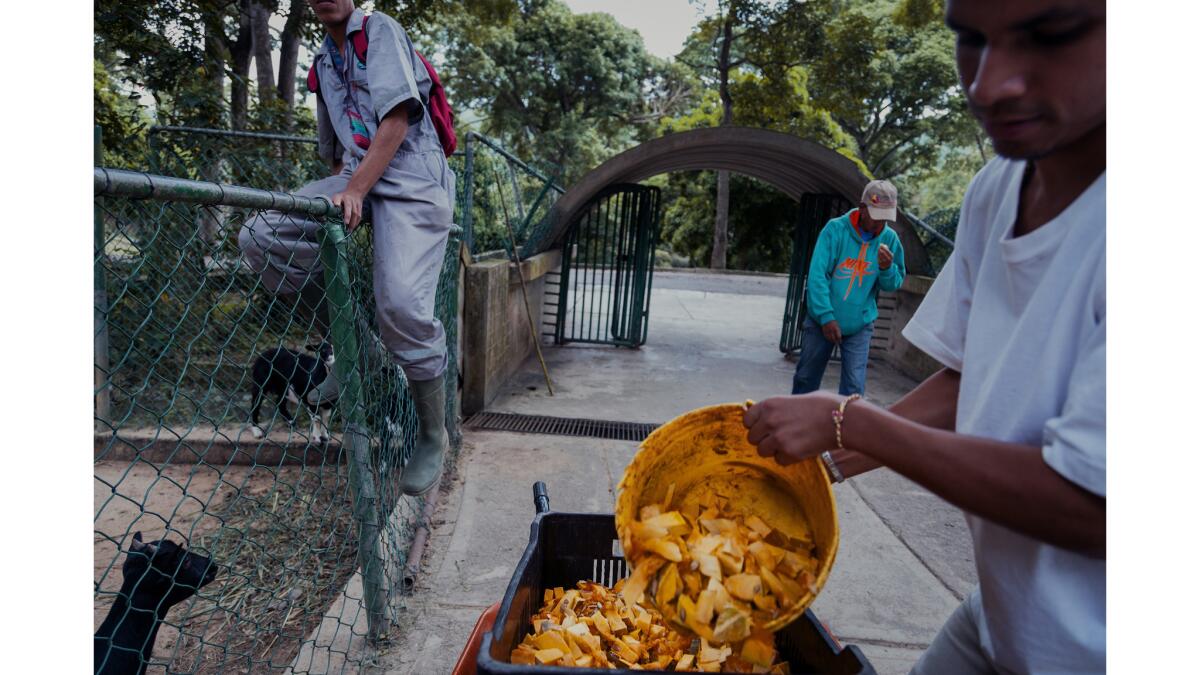
He’s not exaggerating. A survey by Venezuelan nonprofit groups and universities found that three-quarters of the country’s population last year lost an average of 18 pounds for lack of food.
Ruperta’s pen is part of the “African Plain” section of Caricuao. But in recent years the section has steadily lost inhabitants. Napoleon the giraffe, Margarita the African elephant and Rosita the hippopotamus are just a few of the animals who have died. Other casualties include four ostriches.
This year, elsewhere in the park, a mountain lion and an American buffalo died. On a recent weekday, zamuros congregated on the ground in the enclosure holding a bull and another buffalo.
Some parts of the zoo are off limits because of the lack of security staff. There are only 30 guards to patrol the entire zoo. Attendance has plummeted not only because of the depressing condition and scarcity of animals such as Ruperta, but also because poor security has raised the risk of robbery, Avila said.
Parking lots are mostly deserted, partly because there’s so little to see in the zoo and partly because visitors fear being robbed.
A park ranger who has worked at the zoo for 20 years says a big part of the problem is that managers are politically appointed, know little about running a zoo and usually ignore the recommendations of the few remaining professional staffers.
“There is a lot of insecurity. The buffer area of the zoo has been invaded by delinquents who lurk there to attack visitors or steal the few animals that remain, like monkeys and birds,” said the ranger, who requested anonymity for fear of retaliation. “There are no security cameras and no alarms of any kind.
“Caricuao is an abandoned zoo.”
Special correspondents Mogollon and Kraul reported from Caracas and from Bogota, Colombia, respectively.
ALSO
Venezuela tragedy: 15 images capture a nation’s sorrow and turmoil
Millions take part in symbolic referendum rejecting plans to rewrite Venezuela’s constitution
35,000 mink released from farm in Minnesota, unable to survive in wild, officials say
South African hunter is killed by elephant in Zimbabwe
More to Read
Sign up for Essential California
The most important California stories and recommendations in your inbox every morning.
You may occasionally receive promotional content from the Los Angeles Times.
